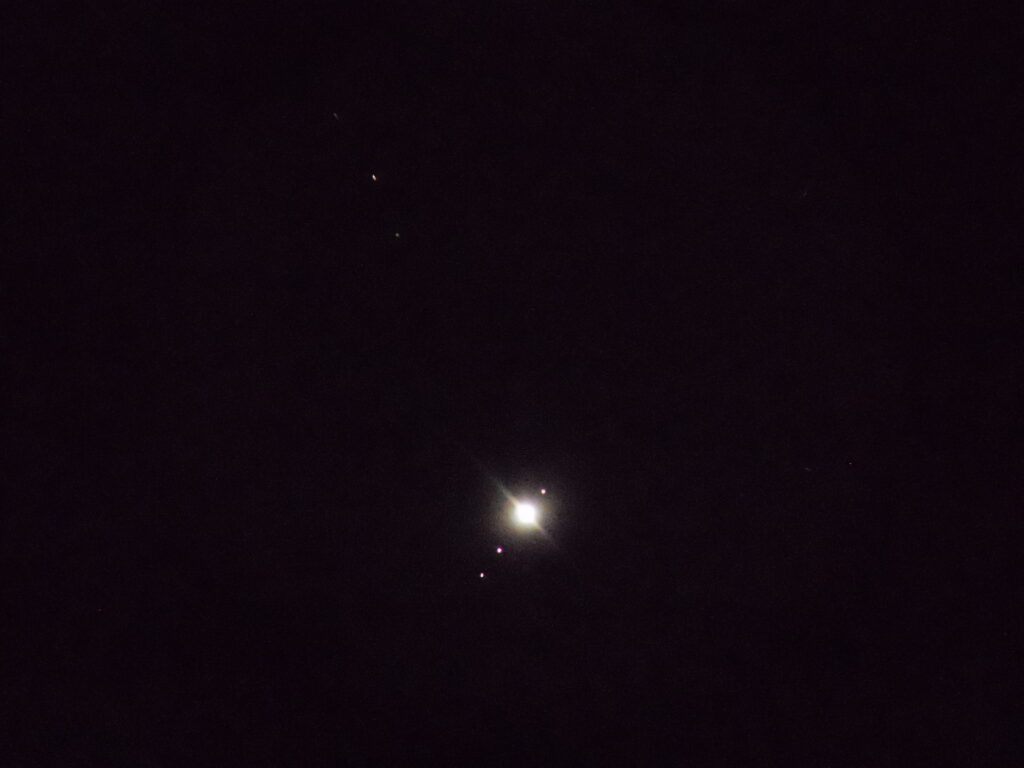Good Morning from my Robotics Lab! This is Shadow_8472 and today I am covering a new telescope I got for Christmas. Let’s get started!
I’ve wanted my own telescope since before I was old enough to responsibly take care of one. My childhood Monopoly set is a novelty Astronomy Edition. Solarquest was an even more dear game – though we’ve learned a bit more about our solar system since our copy was made.
Unboxing and Assembly
Unboxing was straightforward enough. I followed the assembly instructions, but had a little trouble extracting the tripod’s hex wrench out of its storage slot the first time. The kit reminded me of how a good camera may be bought in accessory parts as easily as a starter kit. Standardized interfaces on interchangeable parts make for an upgrade path.
The instructions cautioned against letting adults unfamiliar with with the telescope on top of the usual warning about children. To see why, I needed look no further than the fine adjustment tools. While intuition says to point them like a camera aiming stick, they’re actually designed to rotate.
The star scope was of interest to learn about. To use, aim the main telescope such that a little, red dot is over the object you wish to view. No matter the direction you look into it, it points at the same spot. The instructions said to aim the main telescope at a land-based location a distance away to calibrate it.
First Light
One “Sabbath afternoon” drive after unboxing the telescope, my father and I scouted a local lake after sundown for stargazing locations. The best spot we found is above a boat ramp, but it has a gate we found open. While a ranger may ask us to leave if we use that area, it’s not like we’d be doing anything more destructive than intended use. We [my mother and I] later called the visitors’ center during hours to confirm a good spot.
After the drive, the clouds broke at home enough to get some nice details of the moon. With the telescope’s magnification, the Earth’s rotation is apparent, but not impossible to manually track while taking turns looking. I tried holding up my tiny Nicon digital camera I’ve used in 3D printing, but was only able to get some blurry pictures before clouds dimmed the sky.
Accessorizing
Starting a new hobby involves cost. There exist a wide range of accessory lenses, filters, eyepieces, tracking systems, and more, but I don’t yet know how seriously I will take this telescope over the course of months to years. First off, I got a bag to take it in the car. Other than that, I at least want some good pictures of the moon and hopefully Saturn’s rings.
The included smartphone mount is nice, but I don’t have a functional smartphone at the moment. My PinePhone prototype unit might work, but the mount will mess with the power button when lining up the camera properly. Another idea is to rig something with a Raspberry Pi. They’re releasing a new generation after what feels like forever, but I’d need to be careful about exactly what case I pick. I’d want something to accommodate a nice touchscreen and a power bank.
Camera Bracket
My first thought was to get a second cell phone mount and pinch fit the tiny Nicon by the camera lens. The obvious concern here is when the battery runs dry and the lens retracts. I’ve abused a similar vintage camera when it was relatively new, and my guess is it would be fine. Nevertheless this idea evolved into cutting up a pool noodle just right to grip the telescope eyepiece and support the camera.
Guess what! Pool noodles are out of season at the moment. Early on we’d considered using the standardized photography mount somehow, but upon closer inspection, all we’d need is a corner bracket. We considered 3D printing, wood, and even bending a retired road sign we [legally] have as aluminum stock, but a near-perfect steel bracket turned up while chasing down compatible bolts and wing nuts. It just needed the holes enlarged a little.
The bracket ended up going together in a single night as my father and I refined a design that would be safest for both the camera and equipment.
We took the telescope out for a second night. I aimed it at what I thought was Saturn, but turned out to be Jupiter. It clearly picked up the four Galilean moons around it. A real time tracker online informed me that Saturn was below the horizon and that the moon was almost new at the time. I was unable to get the bracket to cooperate and a gentle wind occasionally made it difficult to keep the telescope still.
Takeaway
There is still much to do in getting started with my telescope. I plan on follow up posts in the coming months.
Final Question
Have you ever used any optics to observe the night sky?
I look forward to discussing your answers in the comments below or on my Socials!


